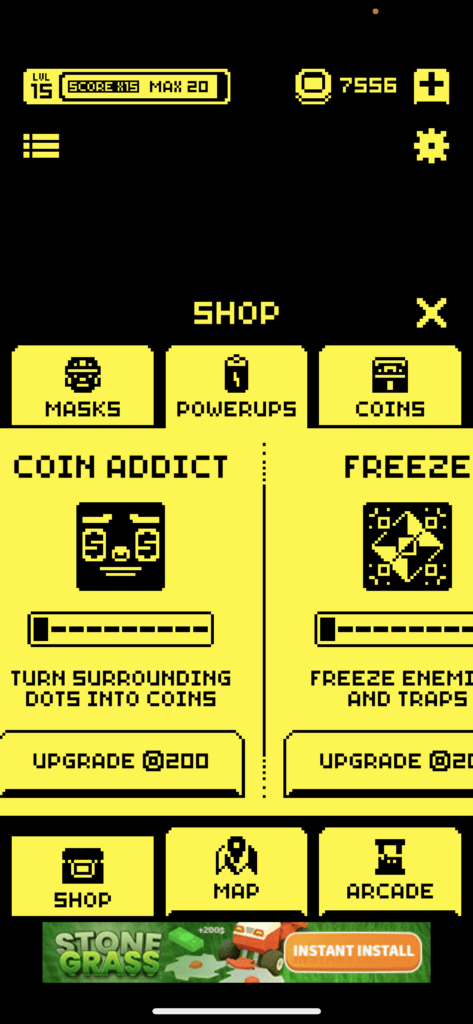For this week’s critical play, I played Tomb of the Mask. Tomb of the Mask is an 8-bit-style arcade game, where you must navigate a vertical labyrinth, collecting points, coins and stars as you search for an exit. As you search for an exit, you face a variety of traps, enemies, game mechanics, power-ups and more. This game was released on mobile platforms in 2016 by Playgendary, and is rated for players ages 12+.
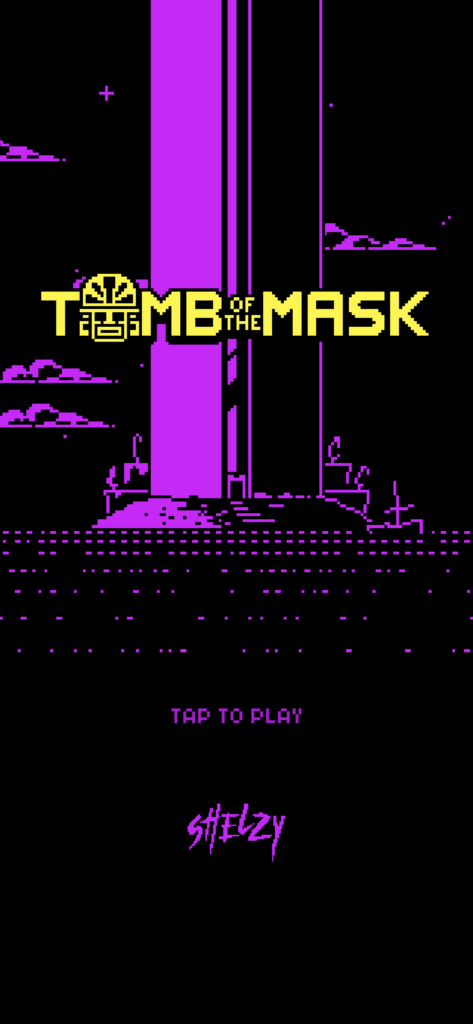
These were the formal elements of the iPhone version of the Tomb of the Mask, specifically focused on the Map, or stage-based mode, rather than their Arcade option (infinite map):
- Players: This version of the game was single player, where you use a third-person perspective to move the player around the labyrinth.
- Objectives/Goals: The goal is to collect all the points, coins, and stars while searching for an exit to the maze. If you collect all the points, you receive a power-up at the end of the level. If you collect all the starts, you rank higher on the star rating. Coins can be used for other purchases.
- Actions: The player can move around the game by swiping in the four cardinal directions.
- Boundaries: The game is separated by stages, so there are breaks between each stage for the player to not be immersed.
- Outcome: You try to do as best as you can on the level, without dying, as you want to continue to use your lives to play more levels.
- From my short play session, I didn’t pick up on any specifics in terms of design conflicts, path/story, rules, , or other game elements we’ve discussed previously.
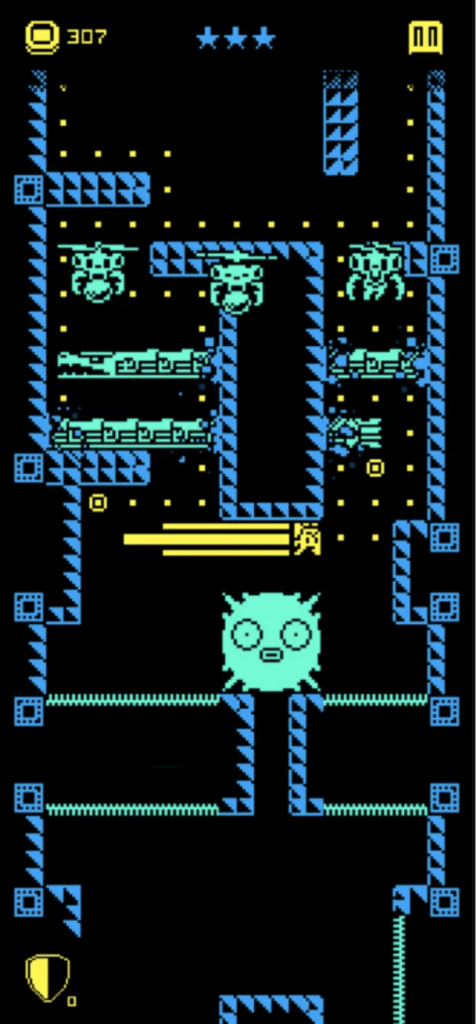
Outside of the formal elements, we can look at the “balance” of Tomb of the Mask by judging it’s challenge level. First of all, the game is rated for ages 12+, meaning that inherently the original difficulty will be at the level of a 12-year-old. In the stage-based portion of the game, the pacing is also very fair. Originally, the game only has one type of challenge, walls that should not be touched by the player.
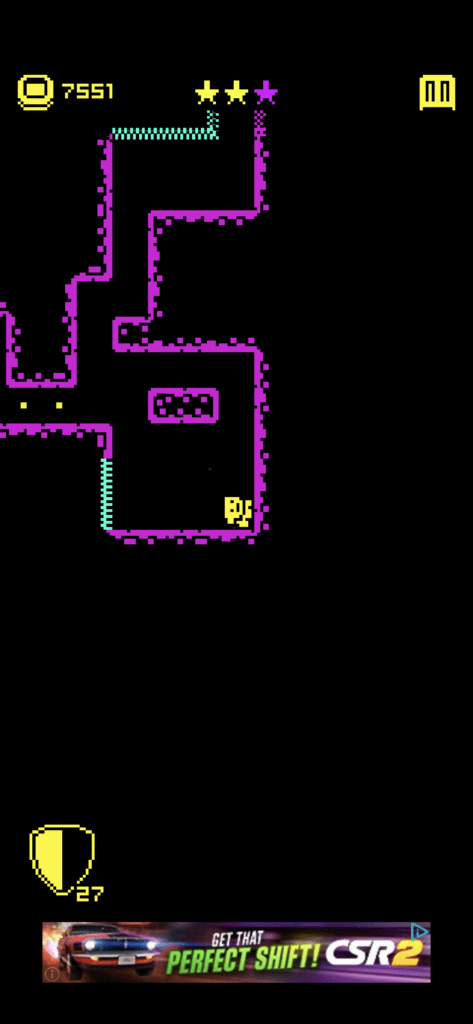
As the game progresses, the challenge ramps up and we see that now there are opponents who are moving (flying around), targeting you (shooting fire balls), chasing you down the labyrinth so you must hurry, and many other challenges. The pacing of this game allows the player to interact with each of these challenges in isolation before fighting them in combination.
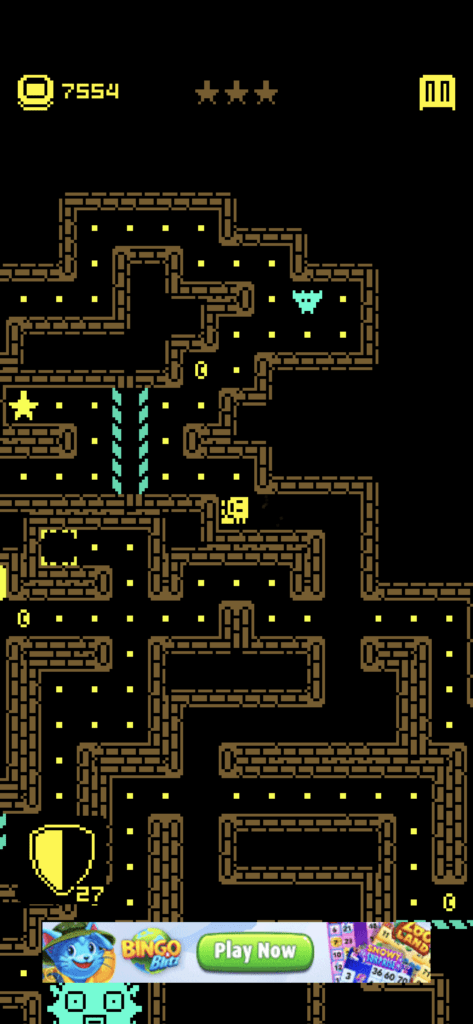
The only downside of the pacing is that when players have to wait for new levels to be released (such as myself who is at level 500), we lose the skill we had built up in the previous levels. This means that jumping back into the game is more difficult than already designed, and we will often fail more times as we remember what we had learned previously.
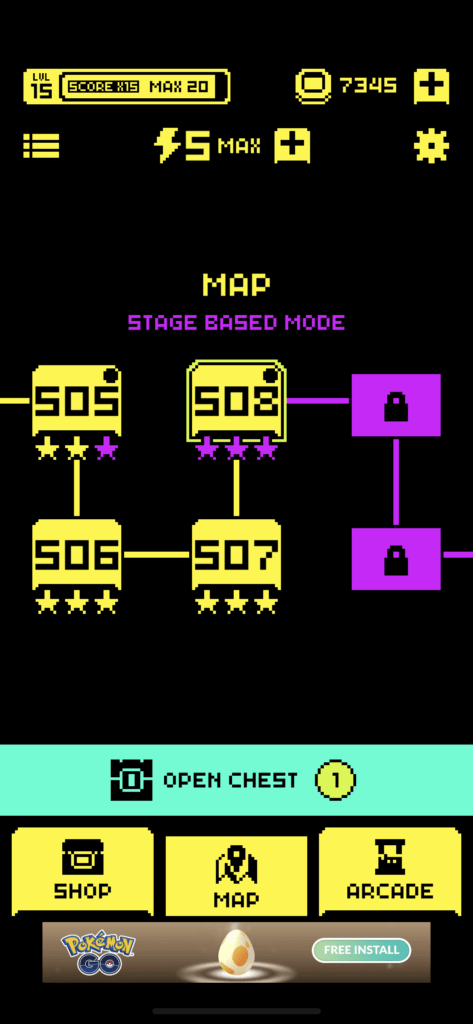
In balancing the game, the designers relied more on an transitive relationship between the points, coins, and stars. Collecting all the points in a level will give you a “protection” power-up, collecting coins allows you to purchase other power-ups and upgrades in the shop, and stars determine your rating for a level. Players can decide which of these options is most important to them and develop a strategy for how they will earn more of that specific item.
